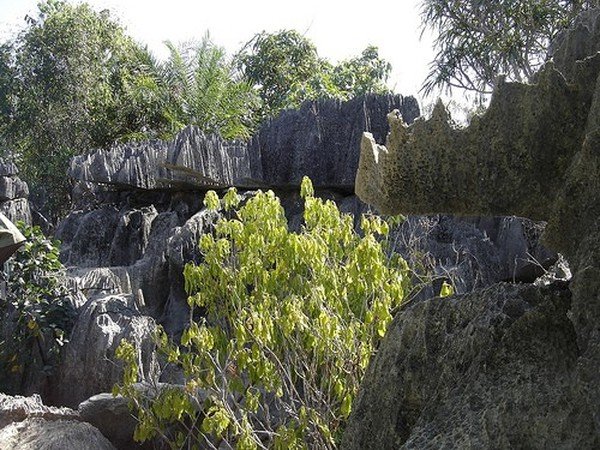|
|
Stone Forest In Madagascar, Manambulu - Bemaraha
|
France invaded Madagascar in 1883 in what became known as the first Franco-Hova War on the pretext of the non-respect of the Lambert Charter—a document granting lucrative concessions to French citizens—and a letter entreating the assistance of the French in ending the rule of Ranavalona I, both signed by former king Radama II. At the war's end, Madagascar ceded Antsiranana (Diego Suarez) on the northern coast to France and paid 560,000 francs to the heirs of Joseph-François Lambert. In 1890, the British accepted the full formal imposition of a French protectorate. Ultimately, the French bombarded and occupied the harbor of Toamasina on the east coast, and Mahajanga on the west coast in December 1894 and January 1895 respectively. The flying column proceeded to march toward Antananarivo but lost many to malaria and other diseases, necessitating reinforcements drawn from Algeria and Sub-Saharan Africa. Upon reaching the city in September 1895, the column bombarded the Rova palace with heavy artillery, causing heavy casualties and leading Queen Ranavalona III to surrender.
After the conclusion of hostilities, in 1896 France annexed Madagascar. The 103-year-old Merina monarchy ended with the royal family being sent into exile, first to Reunion Island and then to Algeria the following year. Slavery was abolished in 1896, but many of the 500,000 liberated slaves remained in their former master's homes as servants.
Under colonial rule, plantations were established for the production of a variety of export crops. Wide paved boulevards and gathering spaces were constructed in the capital city of Antananarivo and the Rova palace compound was turned into a museum. Schools were built, particularly in rural and coastal areas where the schools of the Merina had not reached; education became mandatory between the ages of 6 to 13 and focused primarily on French language and practical skills. The Merina royal tradition of corvee—taxes paid in the form of labor—was continued under the French and used to construct a railway and roads linking the coastal cities to Antananarivo. During World War I, 46,000 Malagasy troops fought in France, Morocco, and Syria. Some leaders in Nazi Germany proposed deporting all of Europe's Jews to Madagascar (the Madagascar Plan), but nothing came of this. After France fell to Germany, the Vichy government administered Madagascar. During the Battle of Madagascar, British troops occupied the island in 1942 to preclude its seizure by the Japanese, after which the Free French took over. With French prestige at low ebb after the end of World War II, the Malagasy Uprising of 1947 broke out. It was suppressed after over a year of bitter fighting, with death toll estimates ranging from 10,000 to over 80,000. The French later established reformed institutions in 1956 under the Loi Cadre (Overseas Reform Act), and Madagascar moved peacefully towards independence. The Malagasy Republic was proclaimed on October 14, 1958, as an autonomous state within the French Community. A period of provisional government ended with the adoption of a constitution in 1959 and full independence on June 26, 1960.
|
|









